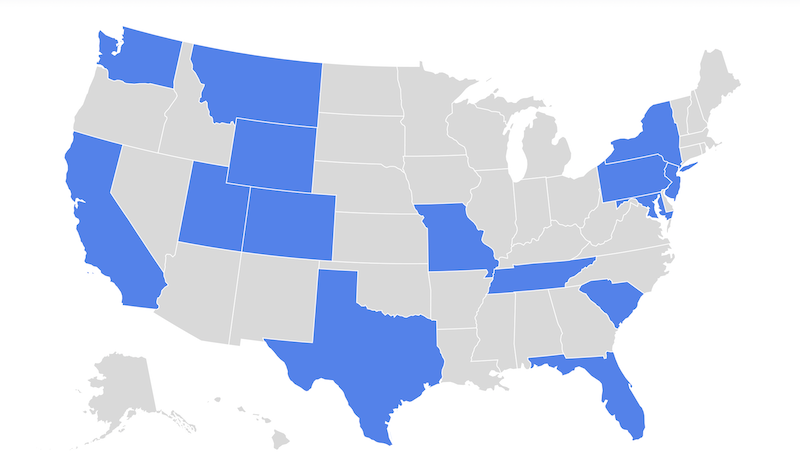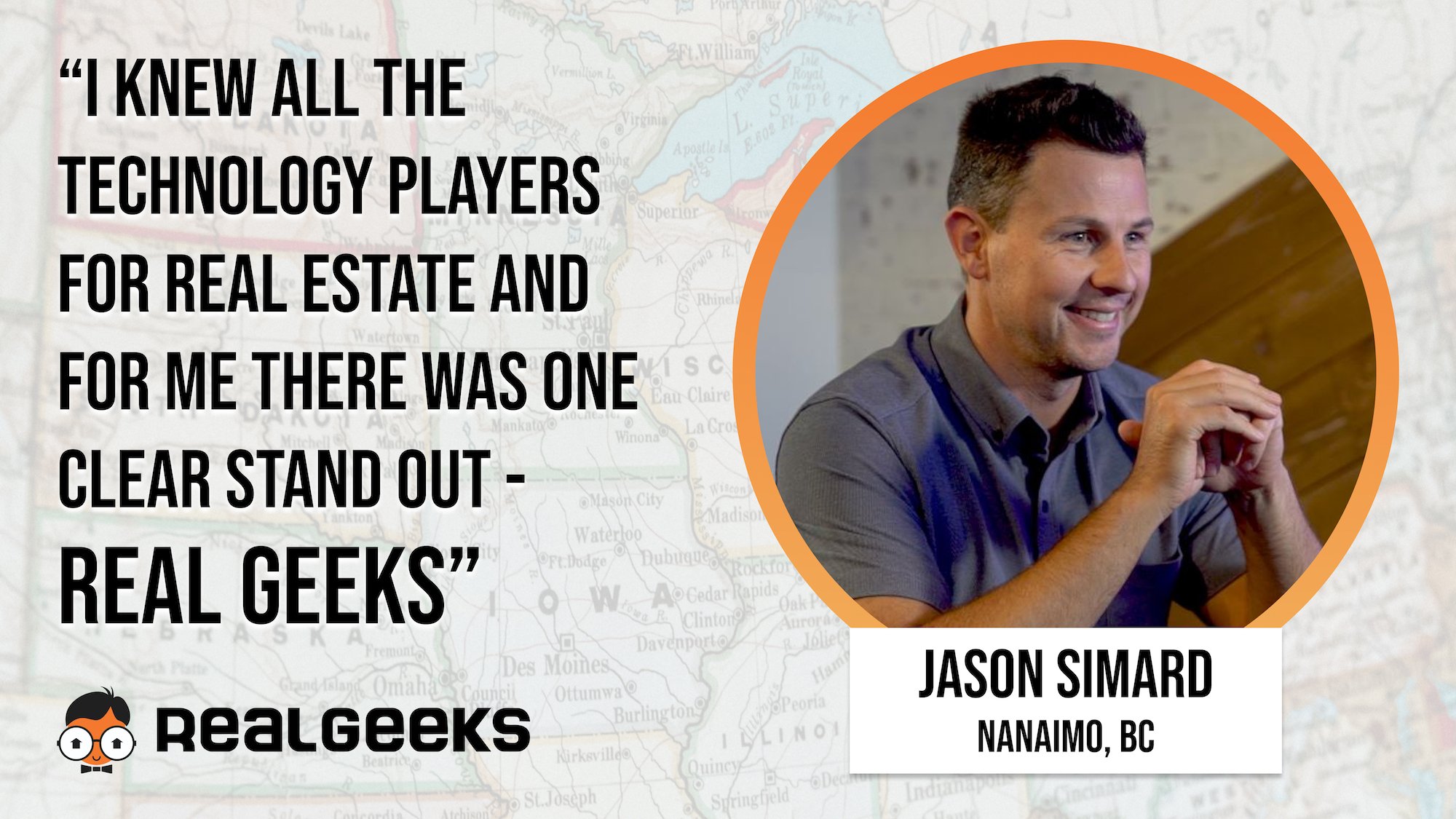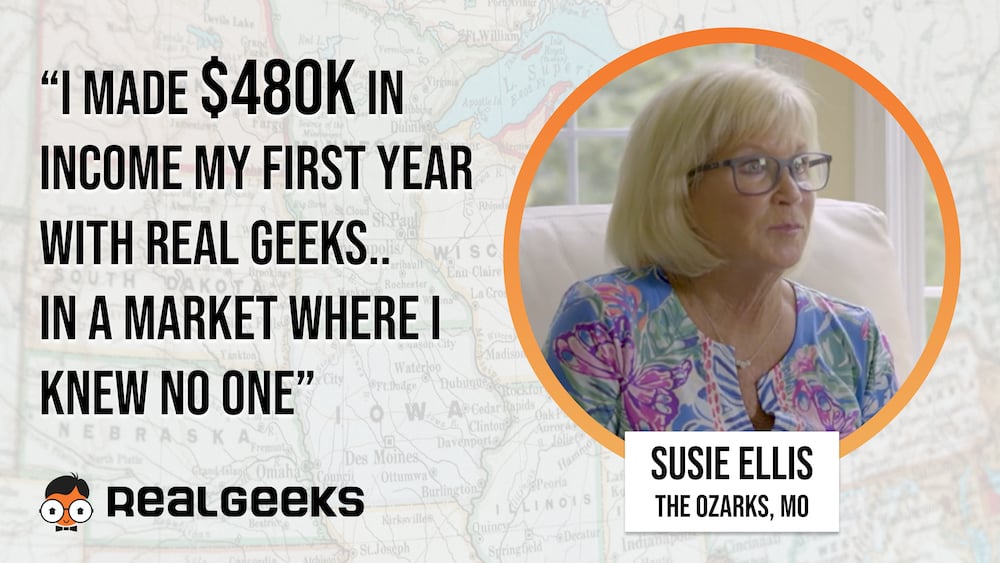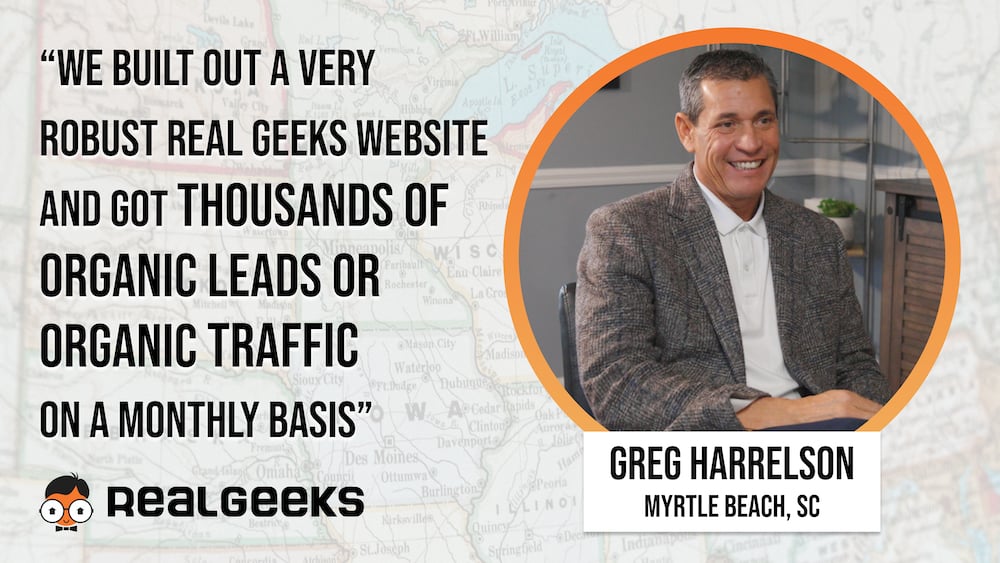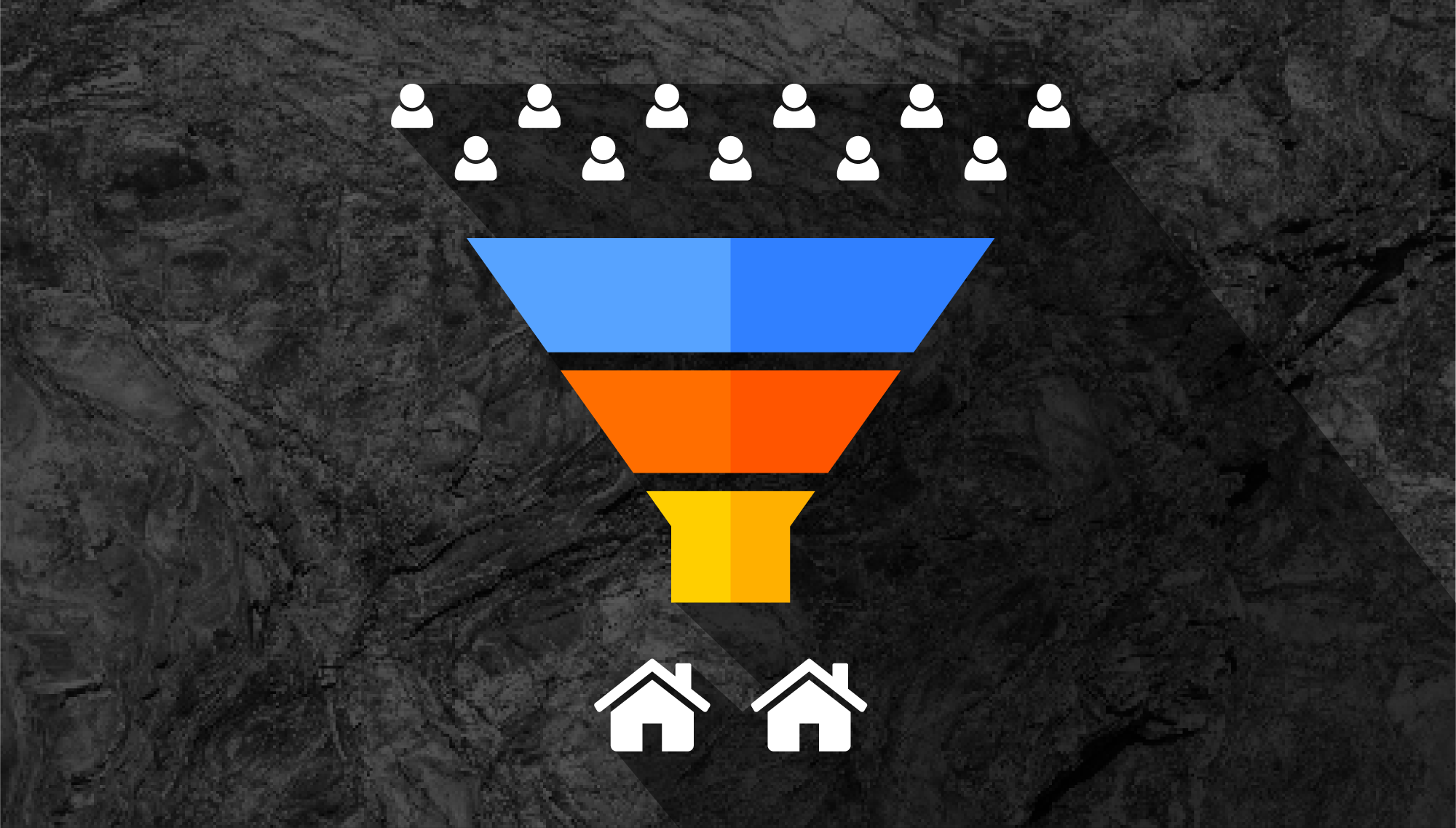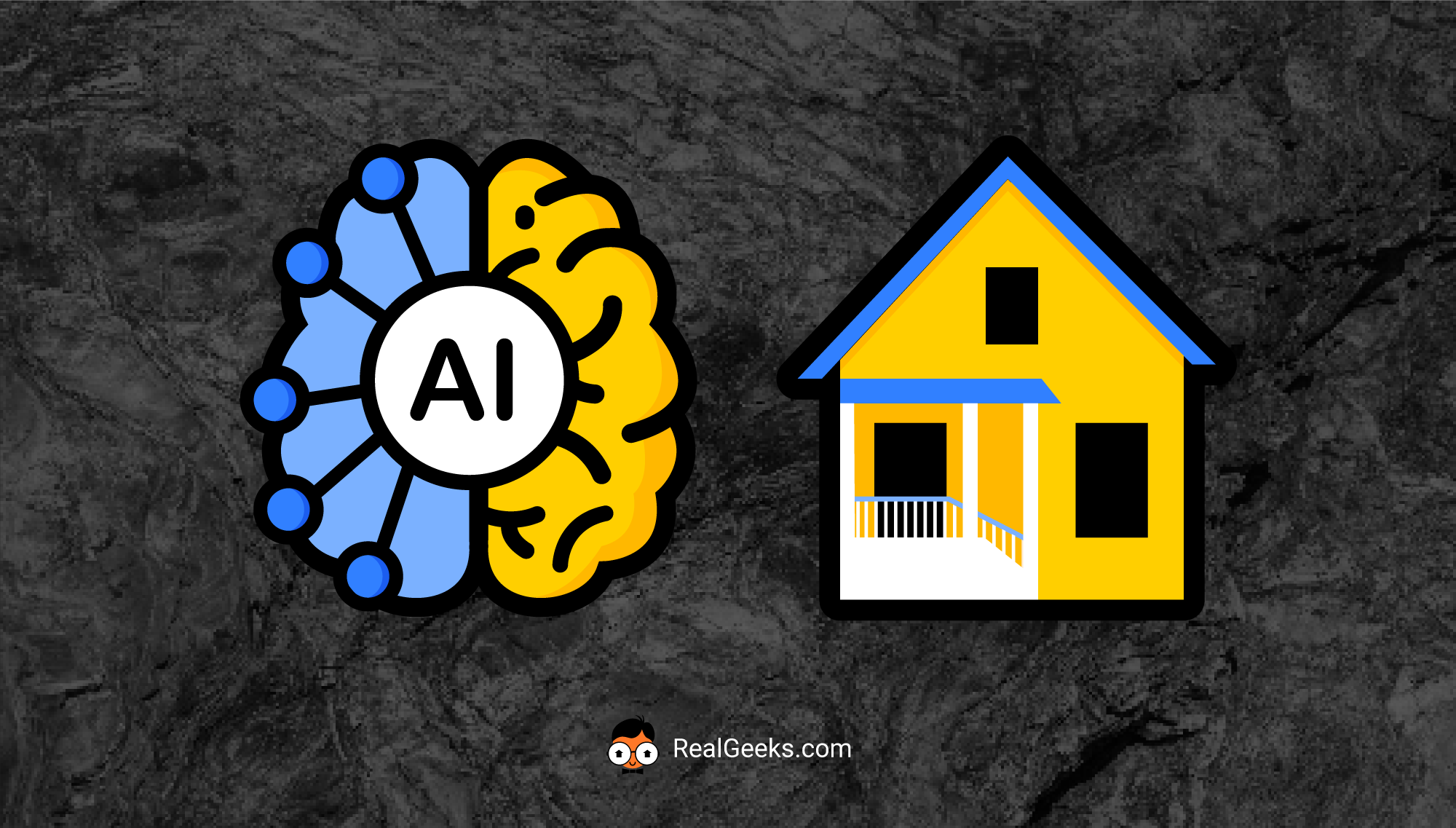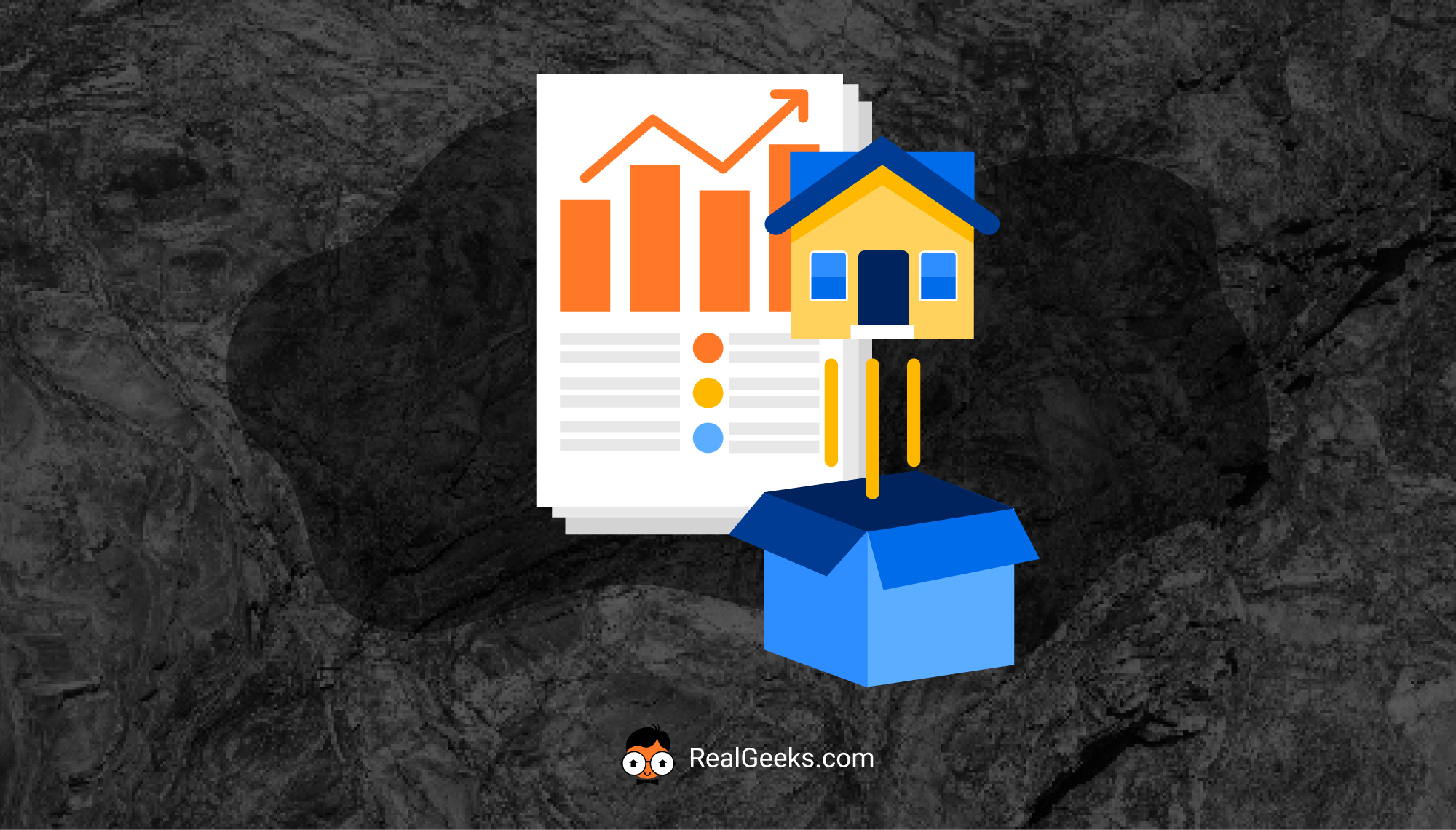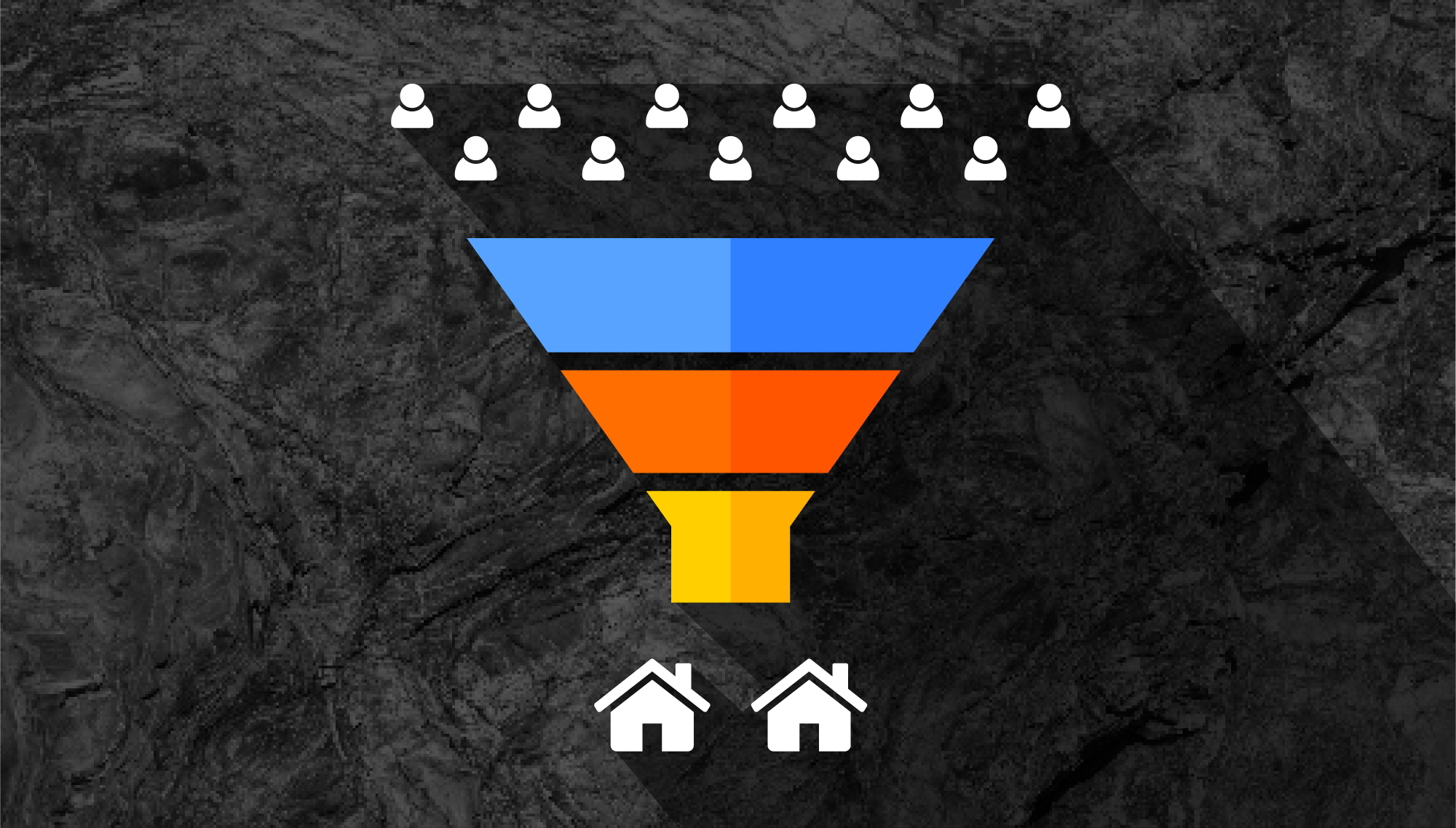
Most people use the Funnel Method for identifying where their leads are in their Buyer's Journey. And they use this criteria to guide the actions they'll take (or in many cases, the actions they won't take – more on this later) with each lead.
In real estate, a top of funnel buyer is a buyer who's thinking about buying.
A middle of the funnel buyer is a bit more active, they're considering buying.
And an end of the funnel buyer is ready for buying.
But according to Greg Harrelson, these qualifiers are somewhat basic and provide limited insight into determining the lead's phase in the funnel.
Greg believes there's a better way to qualify these leads and think about them.
And because he's doing over 1,000 transactions every year, we tend to listen to him.
In this article, we'll break down the three categories he personally uses, as well as how to identify when a lead is in each one, and how to use your real estate CRM to automate this entire process.
And if you want personalized help from Greg, he shares all of his knowledge live on his private coaching community for Real Geeks users, RGMastery.com. Join today for less than $200/month, and no contract fees.
The Three Phases (+ How to Identify Them)
The three phases Greg uses to identify where the leads are in the buying process are:
- the Dreaming Phase,
- the Exploratory Phase, and
- the Buying Phase.
Let's use Greg's main market, Myrtle Beach (South Carolina) as an example. During the winter season, it's common that plenty of couples, annoyed with the cold will think about moving down south. This is normally when his website will get an influx of new leads.
THE DREAMING PHASE
When one of these leads hits Greg's team, they might say something like:
"You know, we're not really sure where we'd like to buy. But we're looking at stuff in North Carolina, South Carolina, and maybe Florida."
Their location criteria is very broad. Which to Greg means it's very likely that they're in the Dreaming Phase.
Alongside this, the lead might say something like:
"Yeah, we're looking at condos. But maybe also houses. I don't think we want to build, but I guess if the right lot became available we might consider building."
Another sign that this buyer is definitely in the Dreaming Phase. They don't have a clear idea of what they want in terms of property type.
Now, yes. It's normal that sometimes you'll get people who wanted a three-bedroom and end up getting a two-bedroom. That's not the Dreaming Phase. That simply means they had one clear type of property in mind, and they had to either settle for a different one, or they prioritized a different characteristic of the property over the number of bedrooms.
But when the lead's desires are so broad and they don't have a clear vision for what they want, they're definitely a Dreamer.
Now, this doesn't make them a bad lead. In fact, if you communicate with them effectively over the following months, you'll be able to keep them loyal to you throughout the entire process, and help them move across the other two phases until they buy.
"If you ignore a lead when they're in the Dreaming Phase, they're going to ignore you when they're in the Buying Phase," says Greg.
THE EXPLORATORY PHASE
During the Exploratory Phase, you'll notice that the lead's questions become more specific, and more localized.
Going back to Greg's example, he notices that leads are not asking about different markets or different states.
But they'll say things like:
"We're looking at Myrtle Beach. We don't mind North Myrtle Beach, we'd also go down to Conway, and maybe all the way down south to Pawleys Island."
That's every stretch of Greg's market. These leads might also still be open to different types of property opportunities.
So when people have been able to narrow their choices down to a market, but are still quite open about different regions of the market, that's a good sign they're in the Exploratory Phase.
THE BUYING (OR LISTING) PHASE
Finally, we have the Buying Phase if they're buyers, or the Listing Phase if they're sellers.
At this stage, leads have narrowed down their search not only locally, but also in terms of the property type, and the price point they're looking at.
When leads are in this Phase, they'll start asking things like:
"What are the schools like in North Myrtle Beach?"
"What are the taxes in this area?"
"What would the insurance be on a house like this?"
"What does the HOA include?"
"What are the closing costs?"
They've narrowed down their questions to one town, and in many cases, one or two neighborhoods. And they're sticking to the same type of property, in one specific price point.
With this clear vision in mind of what they want, they're asking about the quality of life of the neighborhoods they're considering and the details of the buying process, in order to make a final decision.
Where Most Agents Fail
Now, what's important to note here is that as an agent, you need to be able to meet your leads where they're at.
It's almost like you need to become a different type of agent when working with a lead who's on the Dreaming Phase vs a lead in the Exploratory Phase vs a lead the Buying Phase.
All of these leads require different information, and a different type of service.
"If you can meet them where they are, that goes a long way to build trust," says Greg, "And you can become their agent of choice."
Unfortunately, what often happens is that:
- The agent gets too pushy with leads on the Dreaming / Exploratory phase, constantly looking for ways to speed the process along and get them to the Buying Phase. This makes leads feel like they're just another sale to the agent, and that the agent doesn't really care about them, or
- The agent completely ignores leads who are on the Dreaming / Exploratory phase.
When this happens, then the leads will continue to move down the funnel on their own. And once they're ready to buy, they'll find another agent who, oblivious to the truth, will feel extremely lucky that they found a lead already in the Buying Phase.
So next time you find a lead that is ready to buy right away, remember that what likely happened is that they were ignored by another agent when they were on the Dreaming and Exploratory phase.
But make no mistake: they absolutely went through those phases.
How to Use Real Geeks to Know Where Leads Are
So, the only question remaining is: how can we use our CRM to know where our leads are at, and identify when they're ready to transition to a new phase?
Easy. Have an Advanced Search Filter set up where you can automatically populate a list of people who have favorited a new property.
Then, see what they're favoriting.
If, initially, they come in and start favoriting different kinds of properties in many different markets, you'll know that they're in the Dreaming Phase.
If later on you see that they've decided on condos, and that they're looking at many different towns within one or two markets, you'll know that they're on the Exploratory Phase.
And if you see that they're settled on one market and one or two neighborhoods and they're favoriting condos within a specific price range, you'll know that they're in the Buying Phase.
(And if this is the case, call them now!)
It takes a bit of nuance, but not that much. And the more you do this, the easier it will be to understand where they are. You'll start noticing the transitions between Phases better.
You can also look at the Live Feed of Real Geeks and see what your people are doing in real time, and compare their behavior to what they've done in the past.
But by far, the best way of identifying where each lead is (and also finding some low-hanging fruit), is by calling everyone in your database.
Double down on the amount of conversations you're having daily with the people in your database.
Look at each of the leads you've generated in the last 3 months, and call all of the ones you haven't called in the last 2 weeks.
Final Thoughts
So there you have it. This is how you can start identifying where your leads are at, both in real-life conversations and within your CRM.
Make sure to create a plan for each of these stages of the funnel, and stop missing out on leads in a few months time just because you stopped paying attention to them during their Dreaming and Exploratory Phase.
Build rapport with these early-funnel leads, give them what they actually need, and become their agent of choice for every transaction. This is how you get repeat sales and referrals, which are a completely free marketing channel.
And, if you want to learn more about how Greg uses Real Geeks to close over 1,000 transactions every year, check out his private coaching academy, RGMastery.com, where he shares live every single week the tried-and-tested tactics to generate a constant flow of organic leads. You also get access to hundreds of video tutorials and previous coaching sessions.
Join RGMastery for less than $200/mo today, and cancel anytime.
Real Geeks is a highly efficient and effective lead generation and conversion solution for cultivating, capturing, and managing leads at any stage of the home buying or selling process.
Drive traffic, capture leads, nurture opportunities, and close more transactions with a robust CRM, fully integrated custom IDX website, and marketing solutions for agents and teams of any size.
Real Geeks is one of the best lead generation and management platforms available, but don't just take our word for it – hear from customers loving their experience with Real Geeks →

